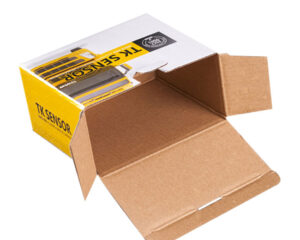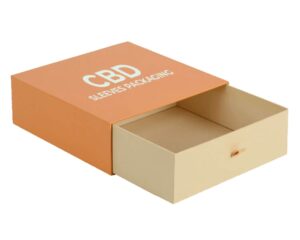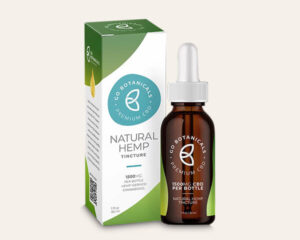What is Sustainable Packaging?
Sustainable packaging refers to materials and designs that reduce the environmental impact of a product’s life cycle. This includes reducing carbon footprints, minimizing waste, and using renewable resources. The goal of sustainable packaging is to create products that not only protect their contents but do so in a way that is environmentally responsible, socially equitable, and economically viable. As consumers and businesses alike step into an era of heightened environmental consciousness, sustainable packaging catapults into the spotlight like never before. It goes beyond just the materials used; it encapsulates energy-efficient manufacturing processes, transportation methods, and the entire product lifecycle, from creation to disposal. Packwhole emphasizes that sustainable packaging is not just a trend; it is a critical component of a circular economy aimed at preserving our planet for future generations.
The Importance of Eco-Friendly Packaging
Eco-friendly packaging is crucial for reducing waste and pollution, conserving resources, and promoting a sustainable future. Traditional packaging methods have historically contributed to significant environmental issues, including overflowing landfills, pollution, and depletion of natural resources. By investing in eco-friendly packaging, companies can play a pivotal role in mitigating climate change, reducing greenhouse gas emissions, and conserving water. Effective eco-friendly packaging is not only beneficial for the environment but can also enhance brand reputation and consumer loyalty. Today’s consumers are becoming more discerning and often choose brands that prioritize sustainability, leading to increased sales and customer retention. With innovations in material science and design, eco-friendly packaging solutions can provide the same level of protection and functionality as traditional options while significantly lessening their environmental impact.
Types of Sustainable Packaging Materials
Packwhole recognizes several sustainable packaging materials that businesses can adopt, each offering unique benefits. Some popular options include biodegradable plastics, recyclable paper and cardboard, glass, aluminum, and compostable materials made from natural fibers. Bioplastics, derived from renewable resources like cornstarch, produce less carbon dioxide during their life cycle, while recyclable materials like paper and cardboard can significantly reduce deforestation and landfill waste. Glass and aluminum not only have high recycling rates but are also entirely recyclable without losing quality, making them ideal for long-term sustainable practices. Utilizing natural fibers, such as hemp or bamboo, provides a renewable alternative that can biodegrade quickly and enrich the soil. By opting for these sustainable materials, companies not only make a positive environmental impact but also engage conscious consumers who prefer ethical products.
The Role of Design in Sustainable Packaging
Design plays a monumental role in achieving sustainable packaging goals. A thoughtful design can minimize material usage, enhance recyclability, and facilitate efficient transportation, thereby reducing emissions. By employing minimalist packaging designs that use less material and focusing on clever structural techniques, brands can lower their packaging footprint without sacrificing quality or product safety. Incorporating modular design principles can allow consumers to repurpose or reuse packaging, further extending the lifecycle of the product. Strategic branding is also essential; clear labeling and instructions on disposing or recycling packaging materials encourage consumers to participate actively in sustainability efforts. At Packwhole, we believe that effective design not only aids in environmental goals but also strengthens brand identity and fosters deeper customer connections.
The Benefits of Sustainable Packaging for Businesses
Investing in sustainable packaging offers numerous benefits for businesses beyond mere compliance with regulatory standards. It helps in reducing costs in the long run, as sustainable materials often require minimal energy for production and can lead to savings in waste disposal fees. Furthermore, adopting sustainable practices can foster innovation and differentiate a brand in a crowded marketplace. Companies that embrace eco-friendly initiatives often see enhanced public perception and customer loyalty, which can translate into increased sales and market share. As more consumers prioritize sustainability in their purchasing decisions, being a pioneer in sustainable packaging can serve as a competitive advantage. Additionally, the push for transparency and ethical practices in business makes adopting sustainable packaging a crucial step towards building trust with consumers.
Consumer Trends in Eco-Friendly Packaging
Consumer attitudes towards packaging are rapidly evolving, with more individuals expressing a preference for sustainable options. Surveys show that a significant percentage of shoppers are willing to pay more for products that come in eco-friendly packaging. They are also increasingly aware of the implications of packaging waste on the environment and appreciate brands that transparently share their sustainability efforts. As a result, companies that prioritize eco-friendly packaging can resonate more strongly with their target audience, ultimately leading to better brand loyalty and customer retention. Moreover, as millennials and Gen Z continue to dominate the consumer landscape, their demand for sustainability is likely to push more companies toward adopting eco-friendly packaging solutions. Media and social media platforms are amplifying these messages, making it crucial for brands to align with consumer values concerning sustainability.
Overcoming Challenges in Sustainable Packaging
While the transition to sustainable packaging is undoubtedly beneficial, it is not without its challenges. For many companies, the initial costs of sustainable materials and designs can be higher compared to traditional packaging alternatives. Additionally, issues such as supply chain availability and sourcing sustainable materials may present obstacles for businesses looking to pivot towards eco-friendly solutions. There is also a lack of standardized definitions and certifications for what constitutes “sustainable,” leading to potential consumer confusion. However, companies like Packwhole are determined to navigate these challenges through education and innovation, helping brands find the best practices and materials suited to their unique needs, while also keeping sustainability at the forefront of their operations.
Regulatory Considerations for Sustainable Packaging
As awareness of environmental issues continues to rise, governments and organizations worldwide are introducing regulations aimed at promoting sustainable packaging solutions. Companies must stay informed about legal requirements surrounding packaging materials, waste management, and recycling, as failure to comply can lead to legal ramifications and penalties. Some areas may mandate stricter guidelines on the use of specific materials, while others offer incentives for adopting sustainable practices. Understanding these regulations also provides businesses with an opportunity to lead in sustainability efforts and to help shape future policies in a way that supports both community and environmental well-being. Packwhole emphasizes the importance of proactive engagement with regulatory bodies to ensure compliance and contribute to the broader movement towards sustainable packaging.
Innovations in Sustainable Packaging
The future of sustainable packaging is bright, thanks to continuous innovations in materials and techniques. Scientists and engineers are continually discovering new ways to create packaging that is both functional and environmentally friendly. Developments such as smart packaging technologies, edible packaging, and Mushroom-based materials are leading the charge. Smart packaging allows brands to monitor product freshness and quality, reducing unnecessary waste. Edible packaging can revolutionize the food industry by eliminating waste entirely. Companies are also exploring bio-based materials, such as those derived from seaweed or agricultural waste, that can offer biodegradability and lower carbon footprints. At Packwhole, we are committed to staying at the forefront of these innovations, ensuring that our clients are equipped with the most advanced, eco-friendly solutions available on the market.
Conclusion: Embracing a Greener Future with Packwhole
In conclusion, the shift towards sustainable and eco-friendly packaging is more critical now than ever. As we face unprecedented environmental challenges, businesses have the opportunity to lead the charge toward a greener future. Implementing sustainable packaging solutions not only benefits the planet but also enhances brand reputation, customer loyalty, and overall economic performance. With an array of materials, designs, and innovative solutions available, brands can effectively minimize their ecological footprint while fulfilling consumer demands for sustainability. Packwhole is here to support companies at every step of their sustainable packaging journey, providing tailored solutions that meet both environmental goals and business needs. Together, we can transform the packaging landscape and contribute to a healthier planet for generations to come.







